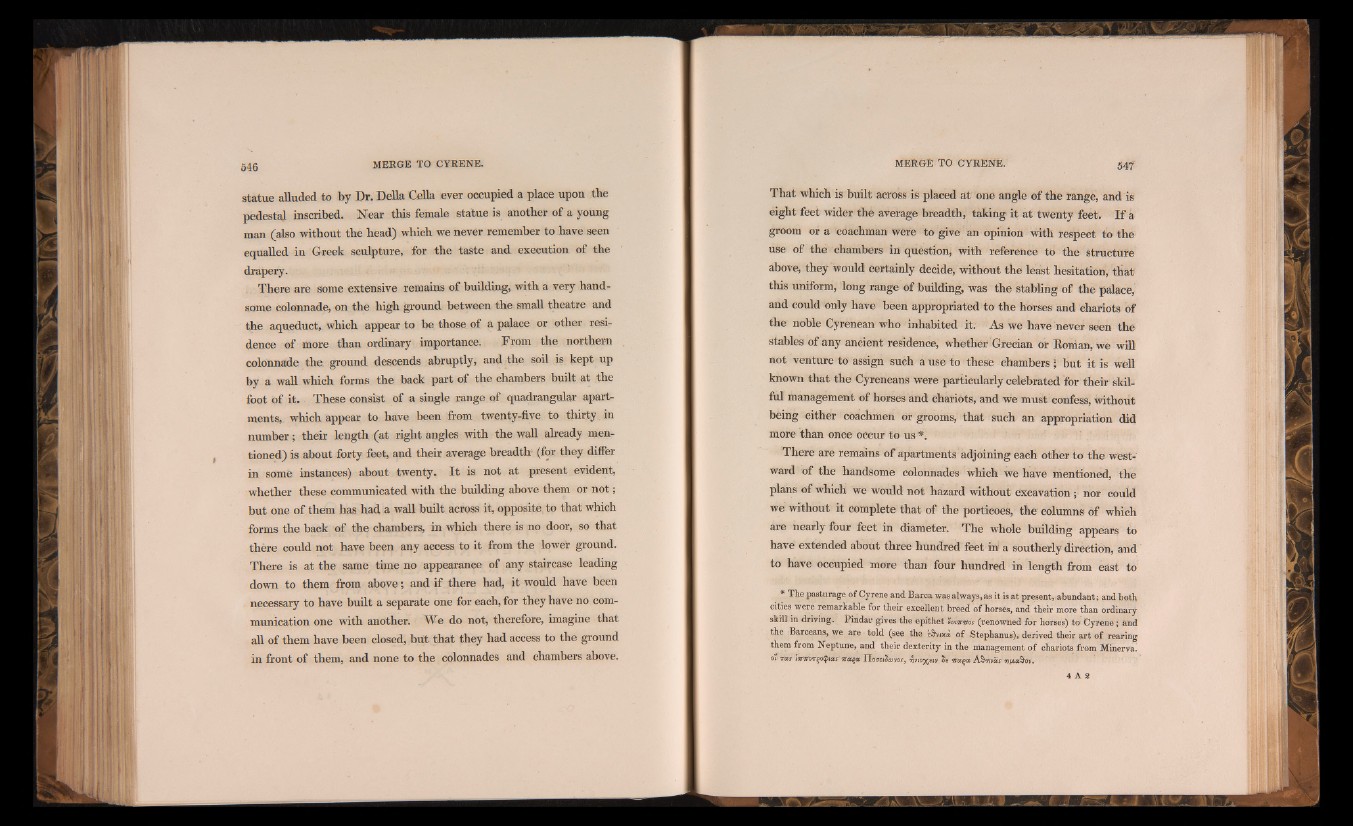
statue alluded to by Dr. Della Celia ever occupied a place upon the
pedestal inscribed. Near this female statue is another of a young
man (also without the head) which we never remember to have seen
equalled in Greek sculpture, for the taste and execution of the
drapery.
There are some extensive remains of building, with a very handsome
colonnade, on the high ground between the small theatre and
the aqueduct, which appear to be those of a palace or other residence
of more than ordinary importance. From the northern
colonnade the ground descends abruptly, and the soil is kept up
by a wall which forms the back part of the chambers built at the
foot of it. These consist of a single range of quadrangular apartments,
which appear to have been from twenty-five to thirty in
number ; their length (at right angles with the wall already mentioned)
is about forty feet, and their average breadth1 (for they differ
in some instances) about twenty. I t is not at present evident,
whether these communicated with the building above them or n o t;
but one of them has had a wall built across it, opposite to that which
forms the back of the chambers, in which there is no door, so that
there could not have been any access to it from the lower ground.
There is at the same time no appearance of any staircase leading
down to them from above; and if there had, it would have been
necessary to have built a separate one for each, for they have no communication
one with another. We do not, therefore, imagine that
all of them have been closed, but that they had access to the ground
in front of them, and none to the colonnades and chambers above.
That which is built across is placed at one angle of the range, and is
eight feet wider the average breadth, taking it at twenty feet. I f a
groom or a coachman were to give an opinion with respect to the
use of the chambers in question, with reference to the structure
above, they would Certainly decide, without the least hesitation, that
this uniform, long range of building, was the stabling of the palace,
and could only have been appropriated to the horses and chariots of
the noble Cyrenean who inhabited it. As we have never seen the
stables of any ancient residence, whether Grecian or Roman, we will
not venture to assign such a use to these chambers ; but it is well
known that the Cyreneans were particularly celebrated for their skilful
management of horses and chariots, and we must confess, without
being either coachmen or grooms, that such an appropriation did
more than once occur to us *.
There are remains of apartments adjoining each other to the westward
of the handsome colonnades which we have mentioned, the
plans of which we would not hazard without excavation ; nor could
we without it complete that of the portieoes, the columns of which
are nearly four feet in diameter. The whole building appears to
have extended about three hundred feet in a southerly direction, and
to have occupied more than four hundred in length from east to
* The pasturage of Cyrene and Barca was always, as it is at present, abundant; and both
cities were remarkable for their excellent breed of horses, and their more than ordinary
skill in driving. Pindar gives the epithet ewwwor (renowned for horses) to Cyrene; and
the Barceans, we are told (see the E&viaa of Stephanus), derived their art of rearing
them from Neptune, and their dexterity in the management of chariots from Minerva.
Oi- rets iWTrorqotyias Tretqot TToaeiSwvos, rivtoj^eiv 9ra g a A S ’ijv a r 9)/xaS,ov.